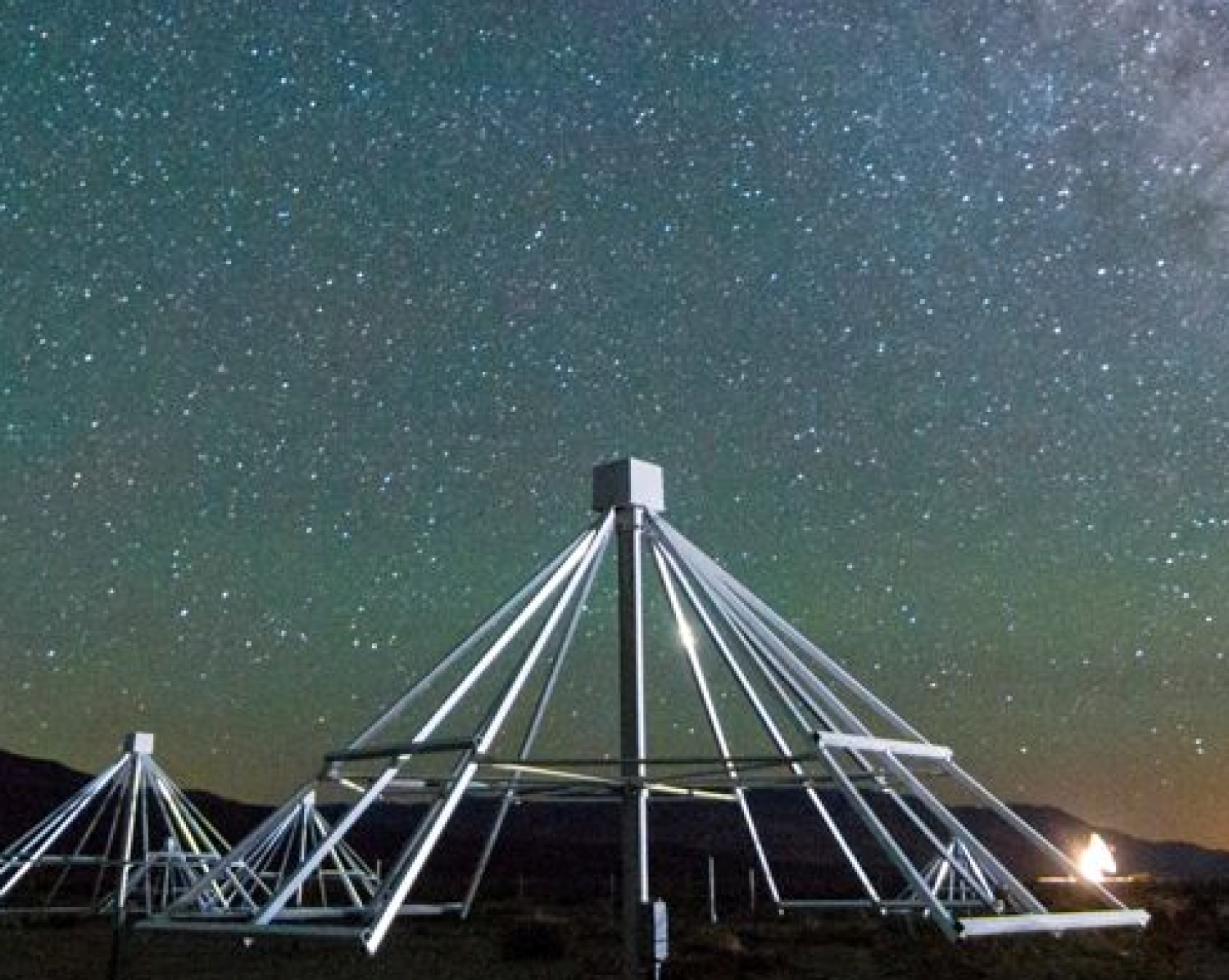Owens Valley Long Wavelength Array (OVRO-LWA) and Large Aperture Experiment to Detect the Dark Ages (LEDA)

The OVRO-LWA currently hosts LEDA, the largest correlator (in terms of the number of input signals) ever built. This allows us to perform full cross-correlation of 512 signal paths. This unprecedented capability coupled with the all-sky sensitivity of a dipole antenna allows the array to image the entire visible sky as frequently as is computationally feasible (of order once per second). Once completed, the OVRO-LWA will be the most powerful radio telescope operational below 100 MHz.
The science goals for OVRO-LWA is a full cross-correlation and all-sky sensitivity designed primarily for the study of high redshift HI as a probe of the epoch of reionization and fast-cadence all-sky imaging for the detection of low frequency transients, such as coherent radio emission from exoplanets and compact object merger events. The OVRO-LWA's all-sky imaging will also enable the detection and monitoring of coronal mass ejections from nearby stars. A significant amount of observing time will also be devoted to solar dynamic imaging spectroscopy.

